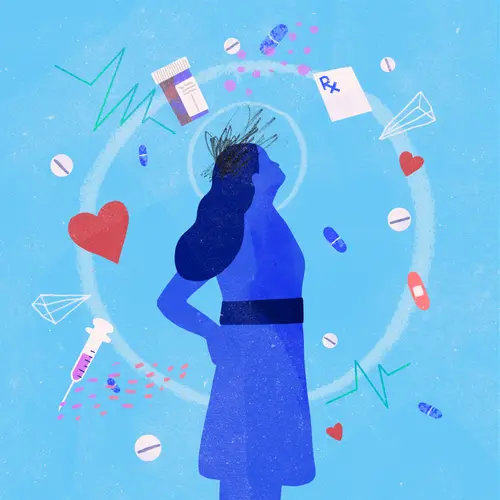When diagnosing post-traumatic stress disorder, or PTSD, doctors typically look for three or four key symptoms. Hyperarousal is one of those key symptoms. Hyperarousal is a pervasive mood- and life-altering symptom in which you are persistently irritable, angry, and paranoid.
Symptoms of Hyperarousal
Hyperarousal can be characterized by:
- Pervasive jittery feelings
- Always being on the lookout for peril
- General irritability
- Becoming angry instantaneously
- Getting startled by loud noises
- Paranoia
- Difficulty sleeping
- Inability to concentrate or focus on one thing
Other Symptoms of PTSD
Hyperarousal is just one of the major symptoms associated with PTSD. Signs of hyperarousal on their own may not result in a PTSD diagnosis. Other symptoms of PTSD to look out for include:
- Re-experiencing traumatic events. This can involve a cluster of different symptoms in which you unintentionally relive the event(s) relating to your trauma. This could manifest as nightmares or flashbacks. People who have PTSD can be triggered by physical things, like sounds or smells, that remind them of their trauma. These episodes can cause physical pains, sweating, sickness, and trembling.
- Avoiding people, places, and things. In order to prevent a flashback or episode, people with PTSD often disconnect from their surroundings. This can cause them to avoid people, places, or activities so as to protect themselves.
- Decline in mental health. People with PTSD often experience other mental health issues like depression, anxiety, or intense fears. They also often engage in self-harm, addiction, or other destructive activities.
Diagnosis of PTSD
If you or someone you know have been experiencing hyperarousal, or any other symptoms of PTSD, the best way to truly understand what you're experiencing is to see a health care professional. In order to determine if you are experiencing PTSD, a psychologist or psychiatrist will conduct an evaluation of your life and mental state. They may also interview the people closest to you or give you cognitive tests.
Typically, to be diagnosed with PTSD, you will have to experience the key symptoms of PTSD throughout a one-month period. The frequency of each symptom will look like this:
- One re-experiencing symptom,
- Three avoidance symptoms,
- Two hyperarousal symptoms.
How Does Hyperarousal in PTSD Affect Your Life?
Hyperarousal is a severe symptom of PTSD, a disorder which can dramatically change your life. Your fight-or-flight response is perpetually turned on, and you are living in a state of constant tension.
This can lead to a constant sense of suspicion and panic. Paranoia and irritability can set in very quickly, as well as an inability to go to sleep. Depending on how severely you experience hyperarousal, your whole life can be affected by it.
Treatment of PTSD
Traditionally, PTSD has been treated through psychotherapy. Some of the different types of psychotherapy that are most popular for PTSD patients include:
- Cognitive Processing Therapy
- Prolonged Exposure
- Eye Movement Desensitization and Reprocessing
PTSD is also often treated with medication in addition to therapy. Typically, patients are prescribed specific types of antidepressants. Examples of these medications are:
- Sertraline
- Paroxetine
- Fluoxetine
- Venlafaxine
However, even after other symptoms of PTSD have lessened, patients often still report symptoms of hyperarousal. Alternative methods proven to help with hyperarousal include:
- Physiological relaxation training. This is a method of relaxation used in a study conducted by the U.S. Department of Veterans Affairs that teaches breathing and relaxation exercises to manage hyperarousal.
- Meditation. Studies have shown that meditation can significantly lower patients' stress and tension levels.
- Pharmacotherapy. There may be certain situations in which it is necessary to take specific medications to lessen the hyperarousal symptoms. Benzodiazepines with low withdrawal symptoms can be very helpful. Lithium, anticonvulsants, and clonidine have also been found to be effective treatments of hyperarousal.

